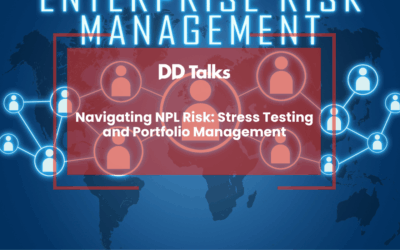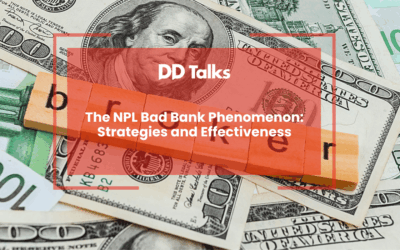Essential Insights for NPL Investment Success
- The European NPL market offers significant opportunities with €500+ billion in volume, with Italy, Greece, Spain, and Portugal leading in NPL ratios.
- Successful deal sourcing requires a multi-channel approach including formal bank auctions, bilateral negotiations, secondary markets, and securitization structures.
- Rigorous due diligence across data quality, legal documentation, collateral evaluation, and operational aspects is fundamental to accurate portfolio assessment.
- NPL valuation combines discounted cash flow analysis (using 12-25% discount rates), comparable transaction benchmarking, and statistical modeling with scenario analysis.
- Effective risk management must address jurisdiction-specific legal frameworks, execution challenges, market conditions, reputational concerns, and currency fluctuations.
- Strategic portfolio construction should balance asset classes and geographies while planning multiple exit strategies and optimal servicing approaches.
- Future market evolution will be shaped by post-COVID distress, technological innovation, ESG considerations, regulatory harmonization, and new transaction structures.
Table of Contents
- Understanding the European NPL Market Landscape
- How to Identify and Source Profitable NPL Deals?
- Essential Due Diligence Steps for NPL Portfolio Evaluation
- Valuation Methodologies for Non-Performing Loan Assets
- Key Risk Factors to Consider in NPL Investments
- Building an Effective NPL Investment Strategy
- Case Studies: Successful NPL Portfolio Acquisitions
- Future Trends Shaping the European Distressed Debt Market
Understanding the European NPL Market Landscape
The European non-performing loan (NPL) market represents one of the most significant distressed debt opportunities globally, with an estimated €500+ billion in NPL volume across the continent. Italy, Greece, Spain, and Portugal continue to lead with the highest NPL ratios, though recent years have seen substantial reductions through active portfolio sales and securitisations.
Market dynamics vary considerably by region. Southern European markets typically offer higher yields but with greater operational complexity, while Northern European jurisdictions provide more streamlined recovery processes but with compressed returns. The regulatory environment has evolved significantly since the 2008 financial crisis, with the European Central Bank and European Banking Authority implementing stricter provisioning requirements that have accelerated banks’ NPL disposal strategies.
The competitive landscape includes established international investors such as Cerberus, Blackstone, and Lone Star, alongside specialised European debt purchasers like Intrum, Hoist Finance, and Arrow Global. More recently, we’ve observed increased participation from Asian investors seeking diversification and yield. Understanding this complex ecosystem is fundamental before deploying capital into European NPL investments.
How to Identify and Source Profitable NPL Deals?
Successful NPL investors develop multi-channel approaches to sourcing attractive distressed debt opportunities. The primary channels include formal bank auction processes, direct bilateral negotiations, secondary market transactions, and participation in securitisation structures.
Bank-led portfolio sales typically offer larger transaction volumes but in competitive auction environments. These processes are often managed by financial advisors like KPMG, PwC, or Deloitte, who coordinate data room access and bidding procedures. Establishing relationships with these intermediaries is crucial for receiving early notifications of upcoming sales.
Bilateral negotiations with smaller financial institutions can yield better pricing but require deeper market connections. Regional banks, specialised lenders, and credit unions often prefer discreet transactions outside formal auctions. Building direct relationships with these institutions’ workout departments can provide privileged access to off-market opportunities.
Secondary market transactions—purchasing portfolios from other investors—represent an increasingly important sourcing channel as the market matures. These deals often arise when primary investors need to rebalance their portfolios or realise returns. Networking within industry associations and attending events like the NPL Investor Forum can uncover these secondary opportunities.
Sophisticated investors maintain detailed databases of market transactions, pricing benchmarks, and servicing partners across different jurisdictions to quickly evaluate emerging opportunities against historical performance metrics.
Essential Due Diligence Steps for NPL Portfolio Evaluation
Rigorous due diligence forms the cornerstone of successful NPL investment. The process typically unfolds in phases, beginning with preliminary assessment based on tape data (anonymised loan-level information) and progressing to comprehensive analysis of selected portfolios.
Data quality verification is the critical first step. Investors must validate the completeness and accuracy of information provided, including loan origination dates, outstanding balances, payment histories, collateral details, and borrower information. Inconsistencies or gaps in data should trigger additional scrutiny or price adjustments.
Legal due diligence requires examining loan documentation to confirm enforceability, identify potential defects, and assess compliance with consumer protection regulations. This includes reviewing loan agreements, security documents, and collection histories. In many European jurisdictions, documentation deficiencies can significantly impair recovery prospects.
Collateral evaluation involves assessing the quality and value of underlying assets. For secured NPLs, this means property inspections, title searches, and market value assessments. Understanding local real estate markets and foreclosure timelines is essential for accurate recovery projections.
Operational due diligence examines the current servicing arrangements and transition requirements. Investors must evaluate whether to maintain existing servicers or migrate to new platforms, considering the operational risks of each approach. The quality of servicing can dramatically impact recovery outcomes.
Valuation Methodologies for Non-Performing Loan Assets
NPL valuation requires sophisticated modelling approaches that account for the unique characteristics of distressed debt. The most common methodologies include discounted cash flow analysis, comparable transaction benchmarking, and statistical modelling.
Discounted cash flow (DCF) analysis remains the foundation of NPL valuation. This approach projects expected recovery cash flows over time, accounting for collection costs, legal expenses, and servicing fees. These projections are then discounted using risk-adjusted rates that reflect the uncertainty of collections and the time value of money. Typical discount rates range from 12% to 25%, depending on asset quality, jurisdiction, and collateral type.
Loan-by-loan analysis is essential for larger exposures, while statistical approaches may be applied to granular consumer portfolios. Recovery curves are typically modelled based on historical performance data, adjusted for current economic conditions and legal environments. Sophisticated investors develop proprietary recovery models for different asset classes and jurisdictions.
Scenario analysis incorporates multiple potential outcomes, including best-case, base-case, and stress scenarios. These scenarios account for macroeconomic factors, regulatory changes, and execution risks. The final valuation often represents a probability-weighted average of these scenarios.
Pricing methodologies must also consider the competitive landscape and seller expectations. In competitive auctions, understanding the strategic priorities of other bidders can be as important as intrinsic valuation in determining appropriate bid levels.
Key Risk Factors to Consider in NPL Investments
NPL investments carry distinctive risk profiles that must be carefully evaluated and mitigated. Legal and regulatory risks rank among the most significant concerns. Each European jurisdiction has unique foreclosure procedures, borrower protection laws, and regulatory frameworks that directly impact recovery timelines and costs. Recent regulatory changes, such as Spain’s mortgage law reforms or Italy’s GACS securitisation framework, can dramatically alter investment outcomes.
Execution risk encompasses the operational challenges of implementing collection strategies. This includes servicer performance, technology infrastructure, and resource allocation. Underestimating the complexity of managing thousands of non-performing exposures is a common pitfall for inexperienced investors.
Market risks include macroeconomic factors affecting collateral values and borrower repayment capacity. Property market downturns, interest rate fluctuations, and economic recessions can significantly impair recovery prospects. Sophisticated investors develop stress testing models to quantify these potential impacts.
Reputational risk has gained prominence as regulators and the public scrutinise debt collection practices. Aggressive collection tactics may yield short-term results but can trigger regulatory interventions and reputational damage. Developing ethical collection frameworks that balance commercial objectives with fair treatment principles has become essential.
Currency risk affects cross-border investments, particularly in non-eurozone countries like Poland, Hungary, and Romania. Hedging strategies should be considered when investing in these markets to mitigate exchange rate volatility.
Building an Effective NPL Investment Strategy
Successful NPL investment strategies begin with clear positioning and specialisation. Investors must define their competitive advantage, whether through jurisdictional expertise, asset class specialisation, operational capabilities, or capital structure flexibility.
Portfolio construction requires balancing risk and return across different NPL segments. Secured corporate exposures typically offer lower risk but with compressed returns, while unsecured consumer debt provides higher yields but with greater volatility. Most established investors maintain diversified portfolios across multiple asset classes and jurisdictions to optimise risk-adjusted returns.
Exit strategy planning is essential before acquisition. Common exit approaches include: collections through maturity, portfolio refinancing, securitisation, or secondary market sales. Each strategy requires different operational capabilities and timeline considerations. The most sophisticated investors develop multiple exit options for each acquisition.
Servicing strategy represents a critical decision point. Options include in-house servicing, third-party arrangements, or hybrid models. In-house servicing provides greater control but requires substantial infrastructure investment. Third-party arrangements offer flexibility but introduce principal-agent challenges. The optimal approach depends on portfolio size, asset complexity, and geographic concentration.
Capital structure optimisation can significantly enhance returns. Leverage facilities, co-investment structures, and securitisation can improve equity returns while distributing risk. However, these structures introduce additional complexity and potential constraints on workout strategies.
Case Studies: Successful NPL Portfolio Acquisitions
The Italian GACS-backed securitisations represent one of the most significant NPL transaction structures in Europe. These government-guaranteed securitisation schemes have facilitated over €80 billion in NPL disposals since 2016. Investors who understood the nuances of the GACS framework and developed relationships with Italian servicers achieved superior returns by participating in the mezzanine and junior tranches while benefiting from the structural protections.
In Spain, Project Hercules exemplifies successful corporate NPL investment. This €1.3 billion portfolio of secured corporate exposures was acquired by a consortium of investors who implemented a granular asset management approach. Rather than pursuing rapid liquidation, they engaged with borrowers to develop restructuring solutions, resulting in recovery rates exceeding initial projections by approximately 20%.
The Greek banking system’s transformation offers another instructive case. Following the implementation of the Hercules Asset Protection Scheme, Greek banks have reduced their NPL ratios from over 40% to below 20%. Early investors who entered this market during its distressed phase, developing local servicing capabilities and navigating the complex legal environment, have achieved some of the highest returns in European distressed debt.
In the residential mortgage space, the acquisition and workout of Northern European mortgage portfolios demonstrates the value of operational excellence. Investors who implemented advanced data analytics and borrower engagement strategies achieved significantly higher cure rates than traditional collection approaches, transforming non-performing loans into performing assets that could be refinanced at premium valuations.
Future Trends Shaping the European Distressed Debt Market
The European NPL landscape continues to evolve, with several emerging trends likely to shape investment opportunities in the coming years. The COVID-19 pandemic’s economic impact has created a new wave of distressed debt that remains partially masked by government support measures and forbearance programmes. As these temporary measures unwind, we anticipate increased NPL formation, particularly in sectors most affected by the pandemic such as hospitality, retail, and commercial real estate.
Technological innovation is transforming NPL investment and servicing. Advanced data analytics, artificial intelligence, and digital collection platforms are enabling more precise borrower segmentation and tailored engagement strategies. Investors who embrace these technologies can achieve superior recovery outcomes while reducing operational costs.
ESG considerations are increasingly influencing NPL investment strategies. Responsible collection practices, sustainable property management, and social impact metrics are becoming important factors in investment decisions and reporting requirements. Forward-thinking investors are developing frameworks to measure and communicate the positive social impact of their debt resolution activities.
Regulatory harmonisation across Europe continues, albeit gradually. The European Commission’s NPL Action Plan aims to standardise aspects of NPL markets, potentially creating more efficient secondary markets and standardised data requirements. These initiatives may reduce cross-border investment barriers and increase market liquidity.
New transaction structures are emerging, including synthetic risk transfers, NPL-backed securitisations with ESG features, and specialised vehicles targeting specific asset classes. These innovations provide investors with more precise exposure to desired risk-return profiles and may attract new capital sources to the distressed debt market.
Frequently Asked Questions
What are the biggest European NPL markets currently?
The largest European NPL markets by volume are Italy, Greece, Spain, and Portugal. Italy leads with the highest absolute NPL volume, while Greece has historically maintained the highest NPL ratio. Southern European markets typically offer higher yields but with greater operational complexity, while Northern European jurisdictions provide more streamlined recovery processes with compressed returns.
How do investors typically value NPL portfolios?
Investors value NPL portfolios primarily through discounted cash flow (DCF) analysis, which projects expected recovery cash flows over time and discounts them using risk-adjusted rates (typically 12-25%). This is complemented by comparable transaction benchmarking and statistical modeling. For accurate valuation, investors conduct loan-by-loan analysis for larger exposures, develop scenario analyses (best-case, base-case, and stress scenarios), and adjust for jurisdiction-specific factors like legal timelines and costs.
What due diligence steps are essential before purchasing NPLs?
Essential NPL due diligence includes: 1) Data quality verification to validate completeness and accuracy of loan information, 2) Legal due diligence examining loan documentation for enforceability and compliance issues, 3) Collateral evaluation assessing underlying asset quality and value, including property inspections and title searches, and 4) Operational due diligence examining servicing arrangements and transition requirements. Each step is critical for accurate recovery projections and risk assessment.
How can investors source profitable NPL deals in Europe?
Investors source profitable NPL deals through four main channels: formal bank auction processes (offering larger volumes but more competition), direct bilateral negotiations with smaller financial institutions (potentially better pricing but requiring deeper market connections), secondary market transactions (purchasing from other investors), and participation in securitization structures. Success requires developing relationships with financial advisors like KPMG and PwC, building connections with bank workout departments, and maintaining detailed market transaction databases.
What are the main risks in NPL investments?
The main NPL investment risks include: legal and regulatory risks (varying foreclosure procedures and borrower protection laws across jurisdictions), execution risk (operational challenges in implementing collection strategies), market risks (macroeconomic factors affecting collateral values), reputational risk (scrutiny of collection practices), and currency risk for investments in non-eurozone countries. Each risk category requires specific mitigation strategies and continuous monitoring throughout the investment lifecycle.
How is technology changing the NPL investment landscape?
Technology is transforming NPL investments through advanced data analytics, artificial intelligence, and digital collection platforms. These innovations enable more precise borrower segmentation, tailored engagement strategies, and improved operational efficiency. Investors leveraging these technologies can achieve superior recovery outcomes while reducing costs. Digital platforms are also enhancing portfolio management capabilities, improving transparency, and enabling more sophisticated scenario modeling for valuation and risk assessment.
What impact did COVID-19 have on European NPL markets?
COVID-19 created a new wave of distressed debt in Europe, particularly in sectors like hospitality, retail, and commercial real estate. However, the full impact remains partially masked by government support measures and forbearance programs. As these temporary measures unwind, increased NPL formation is anticipated. The pandemic has also accelerated digital transformation in servicing operations and created opportunities in new distressed asset classes, while investors have adapted their valuation models to account for pandemic-related uncertainties in recovery timelines and costs.




0 Comments